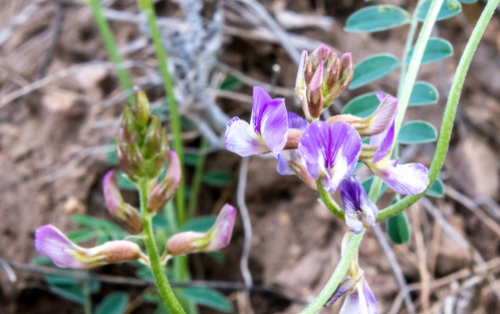Guide to Locoweed: Poisoning and Management

This guide provides practical information on livestock poisoning and management of a common locoweed species in southern Arizona, Astragalus nothoxys.
Oxytropis, a species that closely resembles locoweed in both appearance and poisonous principle (Ruyle 2008). There are some 352 species, 198 varieties, and 552 total taxa in North America north of Mexico (Welsh et al. 2007). Locoweed (also crazyweed or loco) are common North American plants that produce phytotoxins, nitro-toxins, and selenium accumulation that are harmful to livestock. Typical symptoms of locoism occur from poisoningby the alkaloid, swainsonine. Worldwide, swainsonine is produced by a small number of species, most inthree genera of the flowering plant family Fabaceae: Oxytropis and Astragalus in North America, and Swainsona in Australia.
Oxytropis, a species that closely resembles locoweed in both appearance and poisonous principle (Ruyle 2008). There are some 352 species, 198 varieties, and 552 total taxa in North America north of Mexico (Welsh et al. 2007). Locoweed (also crazyweed or loco) are common North American plants that produce phytotoxins, nitro-toxins, and selenium accumulation that are harmful to livestock. Typical symptoms of locoism occur from poisoningby the alkaloid, swainsonine. Worldwide, swainsonine is produced by a small number of species, most inthree genera of the flowering plant family Fabaceae: Oxytropis and Astragalus in North America, and Swainsona in Australia.